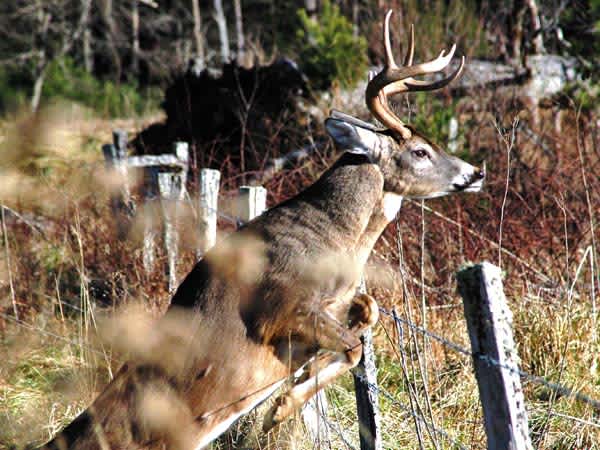Studying Sheds for Deer Management
OutdoorHub Reporters 04.09.12

For some outdoorsmen and women, March can be a time of idleness and longing for the next deer season. Shed hunting is one way to get a deer hunting fix while you prepare for the next season – and it may be able to give you an edge over other hunters.
Well-known deer manager and writer, Bob Zaiglin of Houston, Texas, a certified wildlife biologist, has overseen numerous Texas ranches through the years. According to Zaiglin, hunting sheds helps you learn where deer are concentrated on any particular piece of property. The area where you find the most sheds will be the regions where you will discover the most deer. Also sportsmen can pinpoint the corridors deer are using to enter agricultural fields to feed, water and bed and the places where the deer are hiding from hunting pressure.
 The best time to lease land or to look for a place to hunt is after the rut. If a hunter is considering leasing a particular piece of property and wants to know the condition of the deer on the land, he should be able to walk over the lease and find sheds. If he doesn’t discover any sheds, then he must question how many deer are on the lease. The same is true of public lands. If public lands are available where you plan to hunt this season, but you aren’t sure what the condition of the deer herd is on those lands, then walk the land after the season, and search for sheds. Sheds will also tell sportsmen how well they’re doing with their deer management program. For instance, if your hunting club is attempting to produce numbers of bucks, and your members don’t find very many sheds, then realize something is wrong in your deer management program. Also sheds will tell you the size of bucks you have on the property and the general condition of those bucks.
The best time to lease land or to look for a place to hunt is after the rut. If a hunter is considering leasing a particular piece of property and wants to know the condition of the deer on the land, he should be able to walk over the lease and find sheds. If he doesn’t discover any sheds, then he must question how many deer are on the lease. The same is true of public lands. If public lands are available where you plan to hunt this season, but you aren’t sure what the condition of the deer herd is on those lands, then walk the land after the season, and search for sheds. Sheds will also tell sportsmen how well they’re doing with their deer management program. For instance, if your hunting club is attempting to produce numbers of bucks, and your members don’t find very many sheds, then realize something is wrong in your deer management program. Also sheds will tell you the size of bucks you have on the property and the general condition of those bucks.
On some of the ranches I’ve managed, we collect all the sheds we can discover every year. Then we measure every shed. Although the data doesn’t give us any age criteria, it does give us a bio mass of antlers. We can tell by the sheer volume of antlers we pick up, whether we have a number of bucks or a few bucks, and whether we have little or big bucks. I’ve personally been collecting and weighing sheds for years. I’m attempting to evaluate from the sheds whether we’ve had a good year, a great year or an average year for antler development on the properties we manage. Something else we’re able to determine from sheds is that we can better predict for the hunter what size bucks he’ll have to hunt the upcoming year. If we find numbers of small, scrappy antlers, then we can project that hunters may not bag very many large trophies the coming year. But if we locate some quality racks, we’ll know our hunters the following year can expect to harvest some trophy bucks. So, collecting sheds helps the sportsman keep his expectations of the upcoming buck harvest within more reasonable bounds. Bass fishermen have learned that bass usually are in only 10 percent of a lake’s area. Deer follow much the same pattern in the woods. Shed hunters quickly will learn where their chances are best on any piece of property to find a deer.
If you found this article on shed hunting informative, check out parts one and two of this series. Part four explains the implications for the state of a deer herd after finding locked horns.

